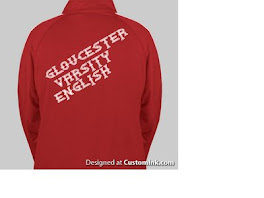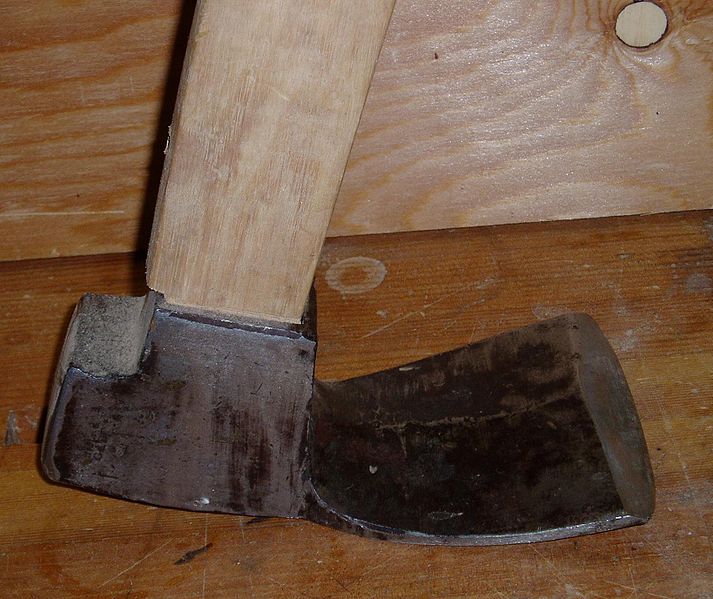If you choose this option you will create a blog devoted to a poetry group, school, or movement.
Before writing...
^Take notes on an inadequate and impossible lecture about poetry and the arts. (Monday and Tuesday next week).
^Choose a “group,” “movement,” or “school”. (No more than two students can share a “movement” or “school”.)
^Read as many poems as you can—at least ten—by poets within the group/movement/school.
1. Write a reflection on the experience of reading the poems.
The edict of the modern and post-modern age in poetry comes from Ezra Pound: “Make it new!” Think about how the poems employ elements of poetry in inventive ways (new, strange, disorienting, alienating, surprising ways)
Think about the treatment of language: speaker’s voice, language style, diction, syntax, sound, stanza structure, line breaks, arrangement on the page. Think about the meaning and effect of the variations from traditional forms of poetry and tradition uses of language.
Think about the content: subject matter, imagery, figurative language, narration. Look for fragmentation and juxtaposition.
Post this reflection (with a list of the poems you have read and who wrote them) on your blog. 300+ words.
2. Write a careful, insightful explication of one of the poems. Post this on your blog. To see a list of last year's blogs go here. (I will help you set up a blog in class next week.) For explication help look here. Also, look at the directions above for ideas about what to explicate/explain/interpret/unfold. You're only doing one explication so it should show an imaginative, insightful grasp of the whole and of the particulars of the poem.
When explicating write about what the poem seems to say and how it says it. With modernist and post-modernist poetry the how (or form)--the speaker's voice, diction, syntax, tone, sound, line breaks, arrangement, etc.--is often as important or more important than the what (or content)--the speaker, the occasion, the subject, the plot or events, other people or characters in the poem.
Or to put it more succinctly, Samuel Beckett (Waiting for Godot) said that James Joyce (A Portrait of the Artist) isn't "writing about something. He is writing something."
300+ words
3. Research the group / movement / school and write a reflection that demonstrates that you understand the group / movement / school, its relationship to the poems you’ve read, and to your own developing ideas about literature and language. {Notice the three parts to this: 1. show that you understand the group & what it was/is all about, its significance, etc.; 2. show how the group's ideas, values, etc. has some relationship to the how (form) and what (content) of the poems you've read; 3. develop your own thoughts about the poems you've read and the group that created them, especially in terms of what you think literature should or could do, as well as what you get from & want from literature.} This post must be accompanied by at least three works cited. 300+ words
4. Find a work of art other than a poem—painting, sculpture, musical composition, dance, film, etc.—that is somehow related to the group / movement / school. In some cases—surrealism, Dadaism, futurism for example—this will be easy because these movements occurred in the visual arts too. In other cases, you’ll have to be a bit more inventive. I can help with this. Ask me.
Write a response explicating the work of art and explaining how it relates to the poetry movement. (Notice there are two parts to this. 1. Provide a close reading of the work of art. For help explicating visual art check out step four here at my friend's blog (Mr. Gallagher of Malden High School). 2. Show a relationship between the poetry you have read (& the group / movement / school of poetry) and the art-other-than-poetry. I will also provide some examples in class. 300+ words.
5. Create a work of art—poem, painting, short film, script, etc.—that relates in someway to the poems, other art, or movement / group / school. Write a paragraph explaining the connection between your creation and the work you have done. The art & paragraph should be on your blog. (If the art is visual and you don't know how to scan it or take a digital photograph let me know; I'll help.)
Language and the Imagination: Modern and Post-Modern Poets in Context (a partial list)
{The lists are tentative and are subject to change. The nature of these groupings is often a bit arbitrary, sometimes the groupings are philosophical, sometimes the groupings are geographical, etc.}
[Proto-Modernists]
Walt Whitman
Emily Dickinson
Gerard Manley Hopkins
[Symbolist Poets]
Stéphane Mallarmé
Paul Verlaine
Charles Baudelaire
Arthur Rimbaud
Jules Laforge
[Anglo- and USAmerican Modernists]
Ezra Pound
T.S. Eliot
D.H. Lawrence
William Carlos Williams
H.D. (Hilda Doolittle)
Hart Crane
Marianne Moore
Wallace Stevens
Mina Loy
e.e. cummings
Austin Clarke
Hugh MacDiarmid
David Jones
W.B Yeats
Dylan Thomas
[European Modernists]
C.P. Cavafy
Rainer Maria Rilke
Georg Trakl
Fernando Pessoa [and his heteronyms]
Berltolt Brecht
Anna Akhmatova
Tomas Tranströmer
Vladimir Holan
Wisława Szymborska
[Latin American Modernismo/Vanguardia]
César Vallejo
Nicanor Parra
Ruben Darío
Nicolás Guillén
José Lezama Lima
Pablo Neruda
Octavio Paz
Jorge Luis Borges
Ernesto Cardinal
[Dadaist Poets]
Tristan Tzara
Hugo Ball
Kurt Schwitters
[Surrealist Poets]
Guillaume Apollinaire
Robert Desnos
Louis Aragon
Andre Breton
Paul Éluard
Pierre Reverdy
Paul Celan
[La Generacion de 27]
Federico Garcia Lorca
Jorge Guillen
Rafael Alberti
Pedro Salinas
Vicente Aleixandre
[Italian Futurism]
F.T. Marinetti
Farfa
[Russian Futurism]
Vladimir Mayakovsky
Velemir Khlebnikov
[Portuguese and Brazilian Futurism]
Alvaro De Campo (one of Fernando Pessoa’s heteronyms)
Mario De Andrade
[Harlem Renaissance]
Langston Hughes
Arna Bontemps
Paul Lawrence Dunbar
James Weldon Johnson
Claude McKay
Jean Toomer
[Objectivism]
Lorine Niedecker
George Oppen
Charles Reznikoff
Louis Zukofsky
Carl Rakosi
Basil Bunting
[Beats, San Francisco Renaissance, and Post-Beat Poets]
Jack Kerouac
Allen Ginsberg
Gregory Corso
William Burroughs
Lawrence Ferlinghetti
Bob Kaufman
Kenneth Rexroth
Anne Waldman
Diane DiPrima
Joanne Kyger
Richard Brautigan
Charles Bukowski
Ed Sanders
Gary Snyder
Philip Whalen
Jack Spicer
Robin Blaser
[Negritude Poets]
Aimé Césaire
René Depestre
Léopold Senghor
[“Black Mountain”/Projective Verse Poets]
Charles Olson
Robert Duncan
Robert Creeley
Denise Levertov
LeRoi Jones/Amiri Baraka {also, Black Arts Movement}
John Wieners
Ed Dorn
Cid Corman
Larry Eigner
Jonathan Williams
Paul Blackburn
Joel Oppenheimer
Hilda Morley
[New York School Poets: first and second generation]
Kenneth Koch
Frank O’Hara
James Schuyler
John Ashbery
Anne Waldman
Ron Padgett
Barbara Guest
Ted Berrigan
Alice Notley
Kenward Elmslie
Bernadette Mayer
Eileen Myles
David Rattray
[Black Arts Movement]
Amiri Baraka
Nikki Giovanni
Sonia Sanchez
Larry Neal
Gwendolyn Brooks
Eldridge Cleaver
Jayne Cortez
Henry Dumas
Mari Evans
[Ethnopoets and Deep Image Poets]
Gary Snyder
Jerome Rothenberg
Diane Wakoski
David Antin
Clayton Eshleman
Pierre Joris
Armand Schwerner
Nathaniel Tarn
Robert Kelly
Robert Bly
James Wright
Galway Kinnell
Linda Parker/Crane
[Confessional Poetry]
Sylvia Plath
Adrienne Rich
Anne Sexton
Robert Lowell
Sharon Olds
John Berryman
W.D. Snodgrass
Delmore Schwartz
Theodore Roethke
[Language Poets]
Ron Silliman
Jackson Mac Low
Hannah Weiner
Susan Howe
Fanny Howe
Clark Coolidge
Lyn Hejinian
Michael Palmer
Charles Bernstein
Leslie Scalapino
[Misty Poets]
Bei Dao
Gu Cheng
Duo Duo
Yang Lian
Mang Ke
Shu Ting
[“Multiculturalism”]
[Martian Poets]
Craig Raine
Christopher Reid
[USAmerican Neosurrealism]
James Tate
Bill Knott
Andre Codrescu
[Flarf]
[Post-language Poetry]
[New Formalism]
[Gloucester Modernist and Avant-Garde Poets]
Jeremy Ingalls
Gerrit Lansing
Vincent Ferrini
Charles Olson
Linda Parker/Crane















